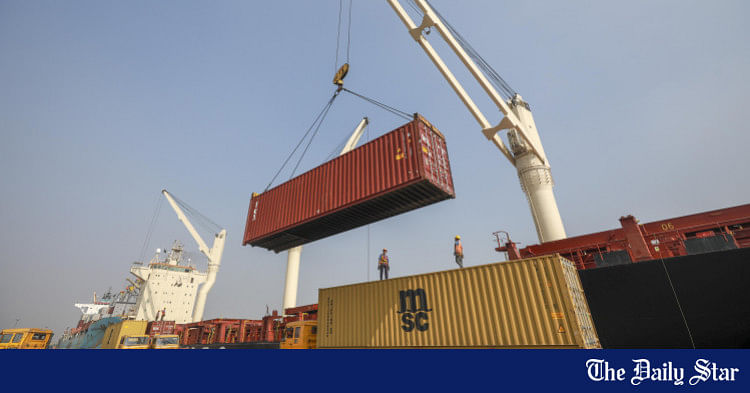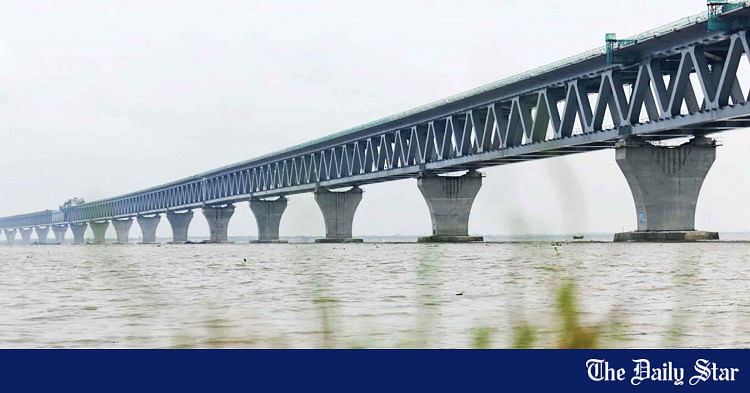Fund-sapping motivated megaprojects may be axed
Adviser indicates, as 'irregularities' galore
FE REPORT
Published :
Aug 20, 2024 00:36
Updated :
Aug 20, 2024 00:36
Ongoing large and megaprojects will be reviewed and less-priority and "politically motivated" ones scrapped, says Planning and Education Adviser Prof Wahiduddin Mahmud of the interim government.
"There are irregularities in taking up projects as some are undertaken by the influence of the contractors and some are by dishonest persons," he said while briefing journalists Monday at the Planning Commission in Dhaka.
"Each of projects needs to be reviewed and scrutinised, as mostly are in indiscipline state…. Firstly, there are problems in the negotiations with the lenders for the foreign-funded megaprojects," he said.
He emphasized release of the funds in the pipeline which are committed by some development partners as that would give a cushion to the foreign-exchange-reserves crisis.
"Some approved projects are yet to be started, some in the middle and some in the last stage…Some projects are politically motivated, which are pledged by the political leaders in their election constituencies," says the economist-turned-functionary of the interim government, installed following the fall of the Sheikh Hasina government.
Those projects which do not have priority and better outcomes have to be reviewed and have to be scrapped, he categorically said in resetting priorities.
Prof Mahmud suggests the PC officials scrap the projects which are approved but involve waste of money.
"There are lots of irregularities in project design, cost estimation and execution period. The irregularities could be for a lack of capacity and could be for the influence of the contractors."
Referring to what is billed highest unit-cost record in Bangladesh's road constructions, the Planning Adviser said since there were irregularities, especially in the infrastructure-related big projects, their cost and time have been overrun.
The last Awami League government took up some megaprojects of which few are completed and many still ongoing. The ongoing 10 megaprojects have received nearly Tk 510-billion allocations in the current fiscal year (FY) 2024-25 Annual Development Programme (ADP).
The Roopur nuclear power plant alone has got an allocation worth Tk 105.02 billion, MRT-6 Tk 19.75 billion, MRT-1 Tk19.42 billion, MRT-5 (northern) Tk 59.68 billion, Bangabandhu Rail Bridge construction project Tk 25.60 billion.
Besides, the ongoing Padma rail-link project has received Tk 35.44 billion, Dohazari-Ramu-Ghundum rail line Tk 14.53 billion.
Some other megaprojects, including the Matarbari port development, Pyra port development, Dhaka Elevated Expressway, Dhaka-Ashulia elevated expressway, Airport 3rd terminal, and Elenga-Hatikamrul-Rangpur 4-lane highway projects, are also going on.
In the meantime, Dhaka-Chittagong Highway, Joydevpur-Elenga highway, and Tunnel under Karnaphuli river megaproject have already been completed.
Professor Mahmud said sometimes the ministries take non-priority projects for constructing complexes and buildings which remain idle and unutilised now.
"There is direct link between the public expenditure and macro-economy as our main target at this moment is stabilising economy and curbing inflation. For this reason, we have to reduce development expenditure which will cut the budget deficit and bring down inflation."
In overall macroeconomic management, project implementation, expenditure, and development budget have a big role, the adviser notes.
"There are some questions about the figure on GDP, inflation and other statistics of the BBS. We will review those and try to establish a credible statistical body of the government."
Terming faulty the past government's higher public-expenditure policy for enhancing GDP of the country, Prof Mahmud said they had only run for enhancing the growth rather not for creating employments.
Higher GDP growth is not the only factor in the macro-economy--employment creation is very important, notes the economist in upending the past 'development' pursuit.
For enhancing the GDP growth, the last government earlier tried to invest more in infrastructure development, considering it "very prestigious".
"I have earlier said only the infrastructure development will be like a skeleton without flesh and blood if we fail to develop our manpower," he reminds
"If we make delay in implementing projects, then price and time will get extended. You know that time is a big factor in the economy."
Prof Mahmud adds: "Some people think that their projects should not be stopped after some expenditure. However, we should consider-- how more funds will be spent and how much return we will get."
The adviser instructed the IMED to make a report on reasons behind 3-4 times revision of the projects, changing design at the middle and any negligence there.












